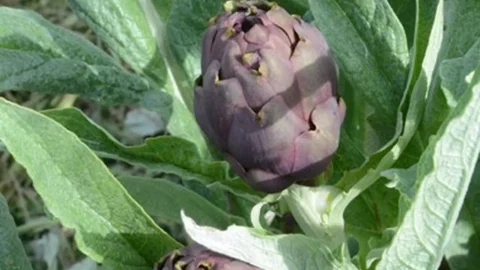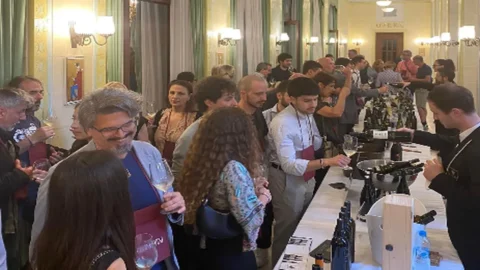Un artichoke without the annoying internal fuzz and without the no less annoying external thorns. But of very high quality, very tasty and with a sweet taste. It lends itself to being consumed raw and however it is also appreciated in many typical dishes like tagliatelle with artichokes, fried artichokes but it can also be simpler cooked in a pan and accompanied with wild fennel, garlic leaves and aromatic herbs.
And the artichoke of Montelupone, a small village of just over three thousand souls in the province of Macerata rich in history, art and traditions that has maintained its medieval imprint with a labyrinth of cobbled streets, picturesque squares and historic buildings, immersed in a natural landscape of rolling hills that fade towards the sea.
It has no internal fuzz and thorns, very tasty with a sweet taste and can also be eaten raw
The locals do they also call "scarciofeno" and they use it in all sauces not only in cooking but also for preserving its smaller flower heads in oil while leaves are used for purifying decoctions or macerated in white wine to obtain an excellent digestive.
Purple in color with greenish streaks, it is smaller than average in size, it is a late variety and is divided into two ecotypes: the early variety with leaves with a gentle outline (not serrated) and more productive is harvested from the end of March; the other ecotype has more serrated leaves, a smaller plant size and is harvested later.
When the plant is young, it can produce ten flower heads (artichoke inflorescences), but after a few years it drops to just four. Due to this rapid decline in production and the lower than average yield (5,5 tonnes per hectare, unlike, for example, the Romanesco which reaches 10 tonnes), the Montelupone artichoke is only known locally and is distributed in a limited area, despite its very high quality.
Became part of the Slow Food Presidia
In the countryside of Montelupone i farmers cultivate the two ecotypes of this variety of artichoke mainly for family consumption, thus preserving local biodiversity. And as often happens with many products limited to a local community, the risk is that the memory of them will be lost. Fortunately the Artichoke of Montelupone has become part of the Slow Food presidia What will prevent this small but precious testimony to biodiversity from falling into oblivion?
The producers of the Presidium are gathered in“Montelupone Artichoke Producers” association which has adopted a set of regulations, which provides for the ban on the use of synthetic chemical fertilizers and herbicides, hormones and other growth stimulants.
Grown without synthetic chemical fertilizers and herbicides, hormones and other growth stimulants.
Furthermore, between one artichoke cultivation and the next, it is necessary to replenish the fertility of the soil by cultivating plant species with a biocidal action such as some legumes for at least two years.
The town of Montelupone celebrates every year this product with a festival in the first week of May. But there is documentation that attests to the holding of an artichoke festival in Montelupone as early as 1440
Two family-run companies can be considered the guardians of the Montelupone artichoke. The Az. Agricola Cipriani was born in 1921 with the first historic artichoke plantation created by Carlo Cipriani together with his wife Maria Corvatta. In 1958 Antonio, son Carlo, decided to also undertake the poultry business by building a chicken coop, which still exists. The business has been managed since 1993 by Marisa who, together with her husband Tiziano, continues the traditional production of artichokes now known and appreciated throughout Italy. The distribution of the products takes place mainly through local retailers.
Documents attest that an artichoke festival was held in Montelupone as early as 1440
Then there is Az. Agricola Il Continua of the Malgrande family who started their business in Montelupone in 1957 when Nazareno and his wife Pia began cultivating the land in the San Matteo district as sharecroppers. Since 2003, what has since become the family business has been taken over by Marco, Nazareno's nephew, who expands production by planting around 500 olive trees. In 2012 the cultivation of artichokes and the production of honey were expanded. The company is currently converting to organic to further improve the quality of the products offered which can be purchased directly on site or from local retailers.





